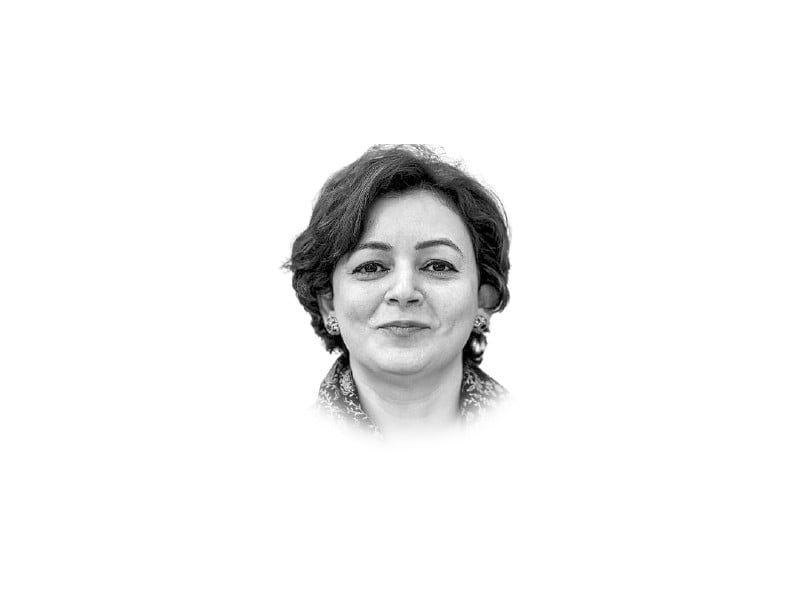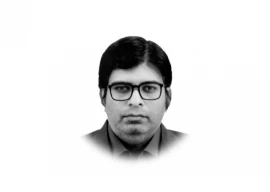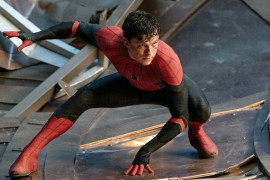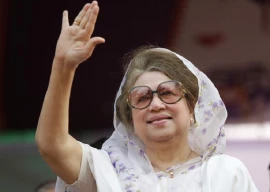
Dear Dr Rahat Naveed Masud,
I have been meaning to write to you for quite some time now. Especially, after I saw the commissioned portraits of Quaid-e Azam and Allama Iqbal, where you proved your command over realistic portraiture slaying the usual pictorial inertia associated with the portraits of heroes. Such portraits have been considered as documents of history conforming to the ideals of national aesthetics. Hence, they correspond to the established personas and aim to incarnate the imagined heroes. You could balance the function of a ‘national portrait’ with form and other essential aesthetic concerns related to the art of portrait painting. Your portraits highlight the identity of our national heroes. They give insight into their personality and psyche. These paintings are of visionaries, leaders and liberators. They also represent the elders of the family; frail and firm, experienced and endured, caring and concerned. In your work, the two national heroes are less godly and more approachable. In this way you challenge the myth of depicting heroes and reinvent the iconography of history painting, situating the heroes amongst humans and not only divinity.
My personal favourites, among your works, have been the figural compositions. You beautifully pair the human figures with other objects and scenarios of everyday life. Together, the characters and the articles engage in a relationship, spatial and epoch, instigating various ideas in the mind of the viewer. It is this implied dialogue between your characters, the scenery, the items and the observer that’s intriguing for a thinker. In many ways, these compositions are critiques on contemporary politics and social norms. You often take up the issues of violence, injustice, freedom, environment, human rights and other societal facets of the national and international level in your paintings. You not only record and recount incidents and events rather decipher them as milestones in the history of mankind. It is this approach that adds a conceptual and mystical aspect to your paintings. The still-life; fruits, flora and fauna act as emblems that support this cause and help generate a visual narrative that is laden with deeper meaning and message. In this way, these paintings become riddles in colour and form teasing and inspiring their viewers at the same time. The variety of sizes of your paintings are also commendable. You are equally comfortable with small and large-size canvasses. It reflects your gentle, amiable personality that recapitulates the role of a teacher and a guide willing to reiterate her ideas in all possible ways. Sometimes as soft, gentle reminders while loud and compelling at others.
More recently, I caught sight of two portraits at the 36th Annual exhibition of Artists’ Association of Punjab held at Alhamra Art Gallery, Lahore. The works were fascinating that perfectly catered to the technology-infested contemporary aesthetic trends in portraiture. In our times portrait is not just a representation of an individual exhibiting social status or revealing personality traits. It is indeed the sum of all this along with the human efforts to understand and describe the world around us. Today, most of us walk around with phone cameras in our hands that allow us to capture the fleeting moods, expressions and countenances that may change in a fraction of a moment. The urgency of life, the temporality of thoughts and the rush of ideas are beautifully captured in the portrait of Mian Ijazul Hassan. Those of us who know Mian Sb can relate to his lively, robust personality and the tenacity of his character as he eagerly shares his perception of life and time. During the late 19th century, the introduction of cameras and photography gave way to new art movements that changed the way art was perceived. Since photography could depict the world more accurately than painting, the latter had to reinvent itself. For this reason, the focus of painters shifted from representing reality to portraying emotions and impressions. Similarly, you seem to reinvent the art of portraiture shifting the attention from individualistic representations to more comprehensive studies that reflect the milieu as it shapes our personalities and carves out our characters. Bravo!
Bano
July, 24













COMMENTS
Comments are moderated and generally will be posted if they are on-topic and not abusive.
For more information, please see our Comments FAQ